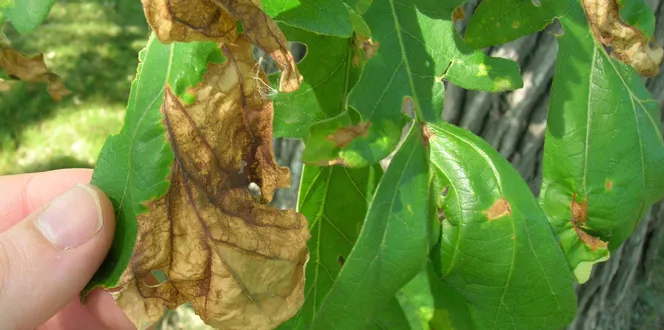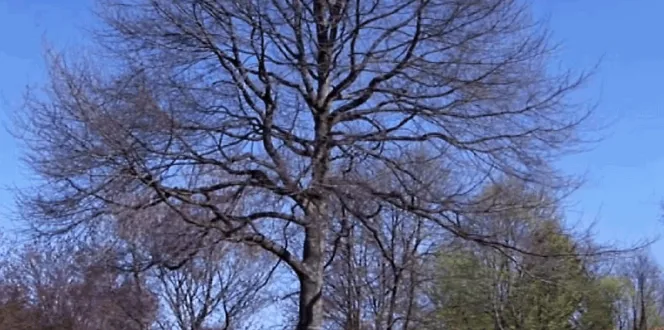Pine trees wow with their array of colors–jade needles, chocolate-brown cones and hickory-colored bark. And for a short time of the year, some pines add yet another hue: shiny, gold sap.
But how much pine sap is too much? Or what if instead of dripping liquid gold, your pine tree’s sap is white?
Keep reading for everything you need to know about when pine trees drip sap, signs it might be a problem and how to help your tree.
Pine Sap: When It Happens, How It Should Look and What You Can Do
What time of year do pine trees drip sap?
Because sap is like the engine that keeps nourishing ingredients running throughout the tree, small amounts of sap may ooze all year from pines. Usually that happens after they’re pruned, when they begin budding or as the seasons change.
Typically, you’ll see the most sap flow in spring and early summer.
During winter, sap slows down and then picks back as spring approaches. Plus, as the temperatures change from cool to warm, the pressure increases, which can force a bit of sap to drip.
How much pine sap is normal? What is considered excessive pine sap?
You can expect to see a few drops here and there during the growing season, or shortly after the tree has been pruned. But if the sap is pooling or puddling, that’s too much.
An excessive amount of sap is often paired with other symptoms like:
- Multiple holes in the tree’s trunk that look like they’re made by an insect
- Broken or damaged branches
- Wounds from a pruning cut
- Dead sections of bark on branches or the trunk (called cankers)
- Sap that’s not golden-brown in color
What if I have a pine tree oozing white sap with a white substance on the tree?
Golden sap comes from healthy trees. If you see any other colored fluid, your tree could have a pest or disease problem. So, your best bet is to have a certified arborist examine the tree in person and see what’s up.
Three common culprits are…
- Pine bark aphids (also called pine bark adelgids). These insects feed through tree trunks, leaving tiny holes of white sap that can make the whole tree look whitewashed.
- Cytospora canker. This disease attacks stressed evergreens, causing brown needles, dead branches and dead bark that oozes a white sap.
- Zimmerman pine moth. Caterpillars of this common moth tunnel under tree bark, which causes golf ball-sized masses of sap to form on the tree’s trunk.
Anything I can do to make a tree stop sapping or stop tree sap from running?
Again, a pine dripping a bit of gold-colored sap is healthy, so just let nature take its course.
But if that’s not the color of your tree’s sap, click below to figure out the problem (and pinpoint a solution).







